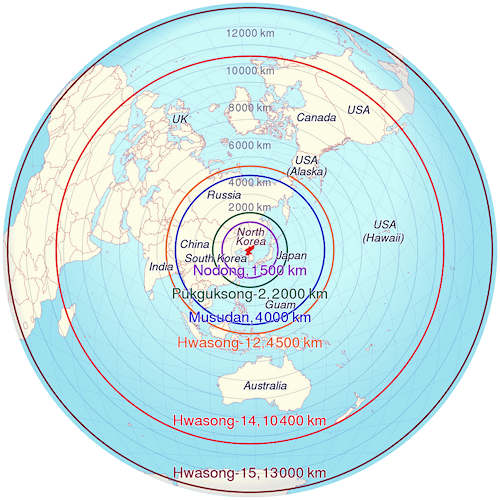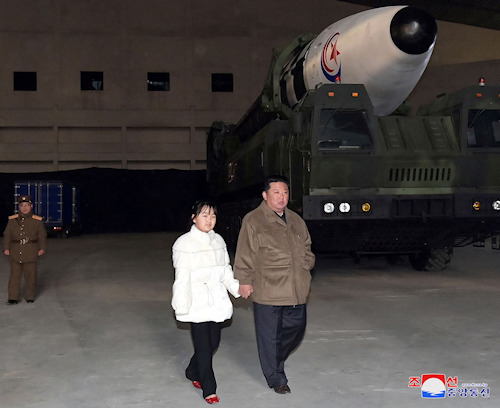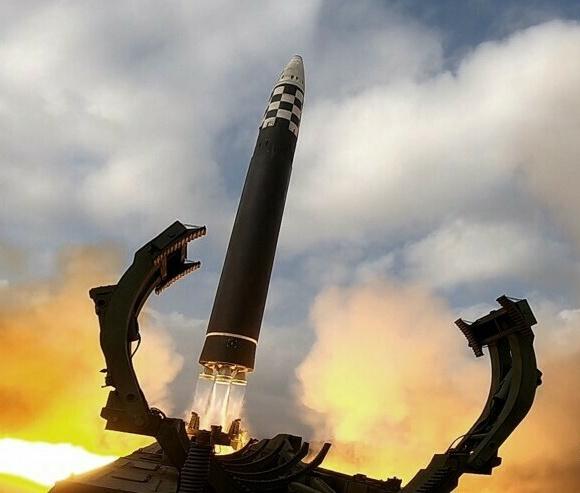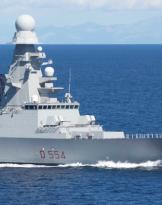For decades now, North Korea has been one of the most active countries in the development of weapons of mass destruction and missile carriers developed in order to become their carriers. Now, after North Korea carried out its last missile test on November 18, 2022 and while the rumors leaked by intelligence agencies portend the carrying out of a new nuclear test (the seventh in the country's history), it is It is necessary to make a brief summary because, as if the global geopolitical situation weren't already complicated enough, the political-military balance on the Korean peninsula has also begun to noticeably creak, and it is good not to be caught unprepared again.
On November 18, the North Koreans tested, officially with full success, an intercontinental missile of the type Hwasong-17 (photo), which the Japanese credit as having the ability to hit a target located at over 15.000 kilometers away.
Earlier, on March 24 of this year, the North Koreans tested another one Hwasong-17 but belonging to one of the first models assembled in an experimental way. In the November test, however, it seems that the launched missile belongs to the final version, now finally ready for mass production. You must also remember that it Hwasong-17 was not the only intercontinental ballistic missile (ICBM) the North Koreans have successfully tested and accepted for service in their Strategic Missile Forces this year, as they have previously done the same with missiles as well Hwasong-14 e Hwasong-15.
 Beyond the individual types and acronyms of missiles, what we all should absolutely not forget is the "overall view". This is what Japanese analysts have done in recent weeks, and the conclusions they have reached are not at all comforting.
Beyond the individual types and acronyms of missiles, what we all should absolutely not forget is the "overall view". This is what Japanese analysts have done in recent weeks, and the conclusions they have reached are not at all comforting.
North Korea entered the club of "missile powers" in the period between 1976 and 1981 when the Soviets gave the country a significant stock of short-range ballistic missiles of the R-17 and R-300 types Ebrus, better known in the West under the name of SS-1c Scud-B and SS-1d Scud-C, together with associated launch vehicles (so-called TELs).
Before that, the only long-range weapons supplied to the North Korean Armed Forces (formally the Korean People's Army) were the Soviet-made 2K6 rocket artillery Luna and 9K52 Moon-M and their respective North Korean copies Hwasong-1 e Hwasong-3. North Korea very quickly introduced these first ballistic missiles into its military instrument, soon producing improved copies of them, known respectively as Hwasong-5 e Hwasong-6.
On April 9, 1984, North Korea carried out the first launch of a domestically designed ballistic missile, thus marking the beginning of a new era in military relations on the Korean peninsula.
1984 years have passed since 38 and, despite three different "sovereigns" having succeeded one another on the "throne of the Kims", the imperative of developing a missile arsenal capable of guaranteeing an effective deterrence system has always remained an obsession for the leadership of Pyongyang and not even the relatively "modernizing" reign of Kim Jong-un (the last member of the "dynasty") has changed this fundamental reality. Indeed, under the latest scion of Pyongyang's family of autocrats, the pace of missile tests has seen an even pejorative increase. Out of a total of 182 missile tests carried out by North Korea from 1984 until today, in fact, 15 took place during the leadership of Kim Il-sung, the first leader and father of the country, 16 were carried out by his son and successor Kim Jong- il, and as many as 151 were made by Kim Jong-un!

Particularly alarming was the sharp acceleration we witnessed during 2022, with as many as 31 scheduled events that led to the launch of a plurality of missiles simultaneously, belonging both to models already in service and to other brand new ones.
As if that weren't enough, Kim Jong-un has also increased efforts in the direction of achieving full nuclear autonomy. If the first to caress the idea of possessing the "Bomb" had already been his grandfather, and his father had carried out two low-potential tests, grandson Kim has already organized four in just 10 years of "reign" and it seems is now preparing another one later this year.
A final element of concern concerns the power of North Korean nuclear warheads, which have gone from a potential of no more than 2 kilotons (first nuclear test on October 9, 2006) to as many as 280 kilotons in the last test (September 3, 2017).
It is now clear that North Korea intends, thanks to the propitious global geopolitical situation, to arrive "quam maximis itineribus" in possessing a credible strategic missile and nuclear shield to be waved as a bugbear against the United States and their allies in in such a way as to make them give up the intention of defending their positions in East Asia so as to be able in the near future to organize its variant of "Special Military Operation" and militarily suppress South Korea.
If you think these scenarios might sound alarmist, prepare for the worst.
Photo: KCNA /web












